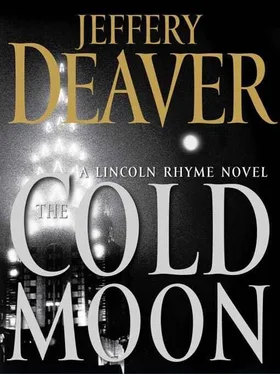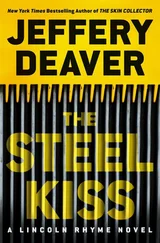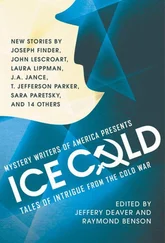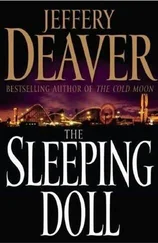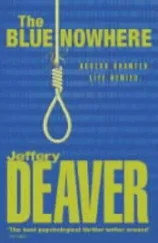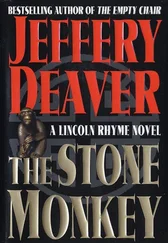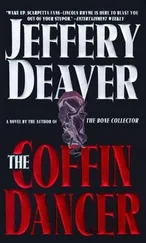Charlotte and Bud-her second husband-were part of a right-wing militia fringe group that had been attacking federal government employees and buildings and UN facilities for years. They'd gone underground a while ago but recently, enraged at the government's meddling forays into world affairs, she and the others in her nameless organization decided it was time to go after something big.
This attack would not only send their precious message but would cause some real harm to the enemy: killing generals and government officials who'd betrayed principles America was founded on and sent our boys and-God help us-girls to die on foreign soil for the benefit of people who were backward and cruel and non-Christian.
Hale had managed to extract himself from his rhetoric-addicted clients and got to work. On Halloween he'd come to New York, moved into the safe house in Brooklyn, and spent the next month and a half engrossed in the construction of his timepiece-acquiring supplies, finding unwitting associates to help him (Dennis Baker and Vincent Reynolds), learning everything he could about the Watchmaker's supposed victims and surveilling the HUD building.
Which he was now approaching through the bitterly cold morning air.
This building had been chosen for the ceremonies and meetings not because of the department's mission, which had nothing to do with the military, of course, but because it offered the best security of any federal building in lower Manhattan. The walls were thick limestone; if a terrorist were somehow to negotiate the barricades surrounding the place and detonate a car bomb, the resulting explosion would cause less damage than it would to a modern, glass-facaded structure. HUD was also lower than most offices downtown, which made it a difficult target for missiles or suicide airplanes. It had a limited number of entrances and exits, thus making access control easier, and the room where the awards ceremony and later the strategic meetings would take place faced the windowless wall of the building across the alleyway so no sniper could shoot into the room.
With another two dozen soldiers and police armed with automatic weapons on the surrounding streets and tops of buildings, HUD was virtually impregnable.
From the exterior, that is.
But no one realized that the threat wouldn't be coming from outside.
Charles Hale displayed his three military-issue IDs, two of them unique to this event and delivered to attendees just two days ago. He was nodded through the metal detector, then physically patted down.
A final guard, a corporal, checked his IDs a second time then saluted him. Hale returned the gesture and stepped inside.
The HUD building was labyrinthine but Hale now made his way quickly to the basement. He knew the layout of the place perfectly because the fifth supposed victim of the psycho Watchmaker, Sarah Stanton, was the estimator of the flooring company that had supplied carpeting and linoleum tile to the building, a fact he'd learned from public filings regarding government contractors. In Sarah's file cabinets he found precise drawings of every room and hallway in HUD. (The company was also across the hall from a delivery service-which he'd called earlier to complain about a package to the Metropolitan Museum that had never been delivered, lending credence to the apparent plot to steal the Delphic Mechanism.)
In fact, all of the Watchmaker's "assaults" this week, with the exception of the attention-getting blood bath at the pier, were vital steps in his mission today: the flooring company, Lucy Richter's apartment, the Cedar Street alleyway and the florist shop.
He'd broken into Lucy's to photograph, and later forge, the special all-access passes that were required for soldiers attending the awards ceremony (he'd learned her name from a newspaper story about the event). He'd also copied and later memorized a classified Defense Department memo she'd been given about the event and security procedures that would be in effect at HUD today.
The apparent murder of the fictional Teddy Adams had served a purpose, as well. It was in the alley behind this very building that Hale had placed the body of the Westchester car wreck victim. When Charlotte Allerton-playing the man's distraught sister-had arrived, the guards had let the hysterical woman through the back door of HUD and allowed her to use the restroom downstairs without searching her. Once inside, she'd planted what Hale was now retrieving from the bottom of the in-wall trash bin: a silenced.22-caliber pistol and two metal disks. There'd been no other way to get these items into a building protected by a series of metal detectors and pat-downs. He now hid these in his pockets and headed to the sixth-floor conference room.
Once there, Hale spotted what he thought of as the mainspring of his plan: the two large flower arrangements that Joanne Harper had created for the ceremony, one in the front of the room and one in the back. Hale had learned from the Government Service Administration vendor liaison office that she had the contract to supply flower arrangements and plants to the HUD facility. He'd broken into her Spring Street workshop to hide something in the vases, which would pass through security with, he hoped, only a brief look, since Joanne had been a trusted vendor for several years. When Hale had broken into her workshop he'd taken with him, in his shoulder bag, something in addition to the moon-faced clock and his tools: two jars of an explosive known as Astrolite. More powerful than TNT or nitroglycerin, Astrolite was a clear liquid that remained explosive even when absorbed into another substance. Hale found which arrangements were going to HUD and poured the Astrolite into the bottoms of the vases.
Hale, of course, might have simply broken into the four locations without the fiction of the Watchmaker, but if anyone had seen a burglar or noticed anything missing or out of order, the question would have arisen: What was he really up to? So he'd created layers of motives for the break-ins. His original plan was simply to pretend to be a serial killer to get access to the four locations he needed to, sacrificing his unfortunate assistant, Vincent Reynolds, in order to convince the police that the Watchmaker was just who he seemed to be. But then in mid November, an organized crime contact in the area called and told him that an NYPD cop named Dennis Baker was looking for a hit man to kill an NYPD detective. The mob wouldn't touch killing a cop, but was Hale interested? He wasn't but he immediately realized that he could use Baker as a second complication to the plan: a citizen getting revenge against a crooked cop. Finally, he added the wonderful flourish of the Delphic Mechanism theft.
Motive is the one sure way to get yourself caught. Eliminate the motive, you eliminate suspicion…
Hale now stepped to the front flower arrangement in the conference room and adjusted it the way any diligent soldier would do-a soldier proud to be part of this important occasion. When no one was looking he pushed one of the metal disks he'd just retrieved from downstairs-computerized detonators-into the explosive, pushed the button to arm it and fluffed up the moss, obscuring the device. He did the same to the arrangement in the back, which would detonate via a radio signal from the first detonator.
These two lovely arrangements were now lethal bombs, containing enough explosive to obliterate the entire room.
The tone in Rhyme's lab was electric.
Everyone, except Pulaski, on a mission at Rhyme's request, was staring at the criminalist, who was in turn gazing at the evidence charts that surrounded him like battalions of soldiers awaiting his orders.
"There're still too many questions," Sellitto said. "You know what's going to happen if we push that button."
Читать дальше
